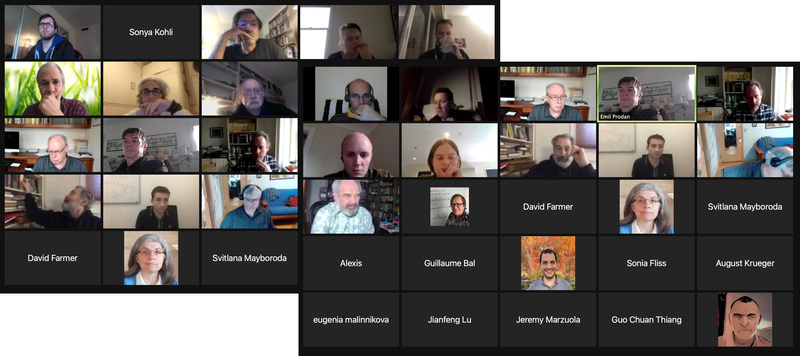
at the
American Institute of Mathematics, San Jose, California
organized by
Daniel Freed, Gian Michele Graf, Rafe Mazzeo, and Michael I Weinstein
A revolution in Condensed Matter Physics and Materials Science has been brought about by recognition of the role of topology in characterizing materials and in the prediction of their physical properties. A second revolution is the emergence of the two-dimensional material: a one-atom-thick monolayer that extends in-plane to the macro-scale. At the crossroads of both is graphene, the best-known and most widely studied example. Graphene is a two-dimensional honeycomb arrangement of carbon atoms and is the most conductive known material, both electrically and thermally. Seen through the Schroedinger equation, honeycomb symmetry endows graphene with spectral properties (Floquet-Bloch band structure) which seed robust and physically important phenomena such as quasiparticle-wavepackets that propagate according to the laws of relativistic Fermions and, when time-reversal symmetry is broken, protected edge states. These properties can be understood (the bulk-edge correspondence) in terms of topological invariants (e.g. Chern number) computable from quantities obtained from the spectral theory of the bulk unperturbed material (Berry curvature of Floquet-Bloch bands). In general, the symmetries of the unperturbed bulk structure and the manner in which symmetry are broken give rise to different topological phases with associated wave properties, which are stable against local (even strong) perturbations.
Another approach to classifying topological phases is via a field theory description which applies at large distances and times. In this context homotopy theoretic methods have been brought to bear, and quite general classifications have been developed and successfully applied in condensed matter physics. Despite the already substantial successes obtained by applying the methods of field theory and of quantum mechanics on lattices to this set of problems, a central goal of this workshop is to build bridges between these two approaches.
Further, the recognition that such phenomena can be realized in other physical wave systems, such as photonics, acoustics and mechanics, has led to very significant activity and excitement in the fundamental and applied physics communities catalyzed by the problems of: predicting, explaining, controlling and applying such physical properties of graphene and related materials.
The workshop schedule.
A report on the workshop activities.
Papers arising from the workshop: